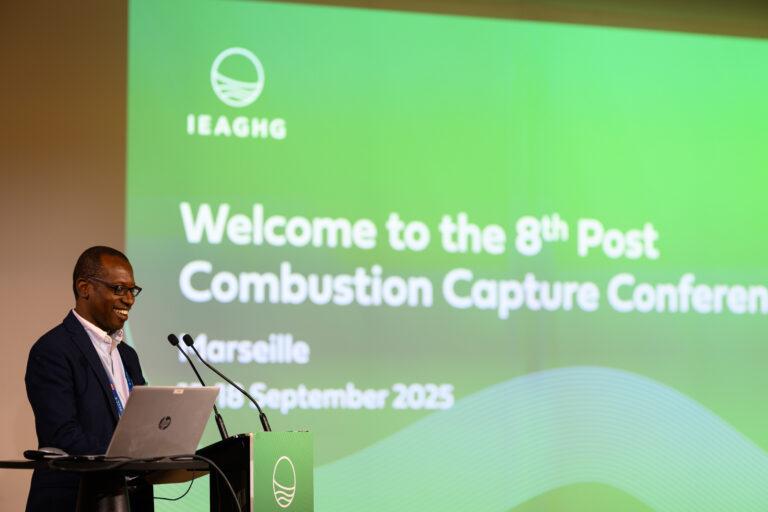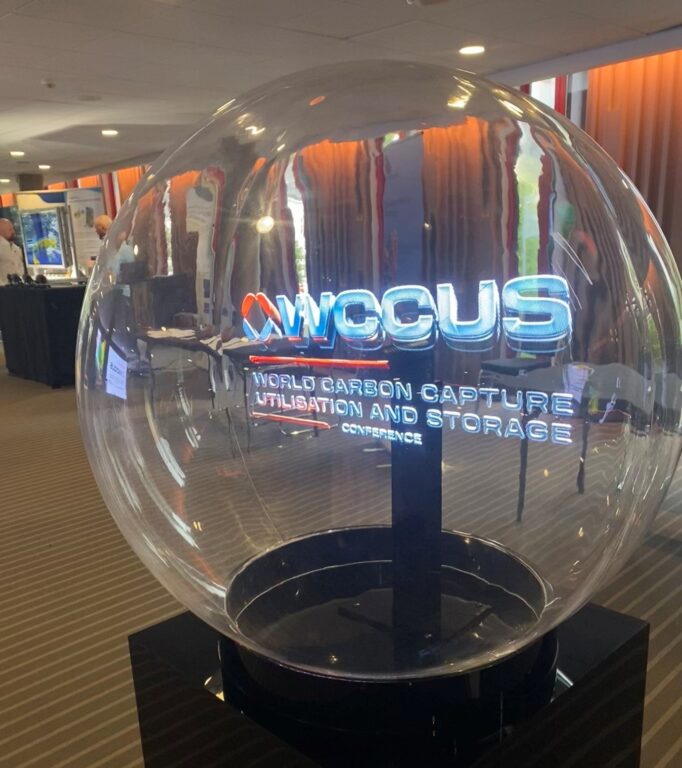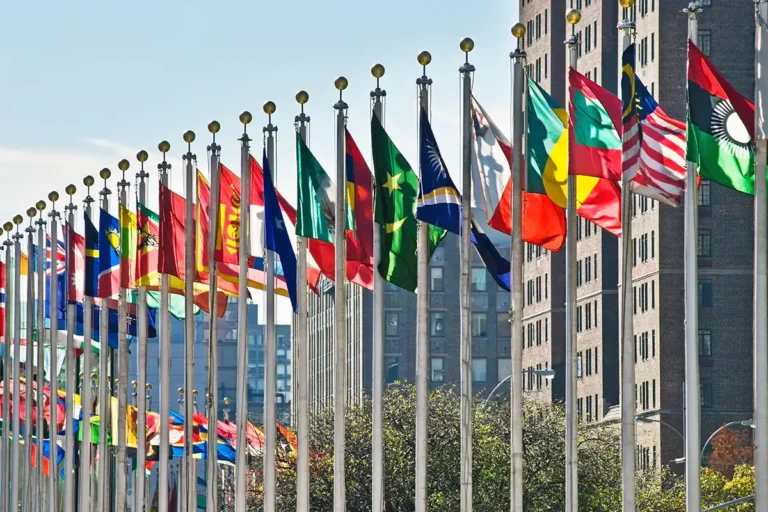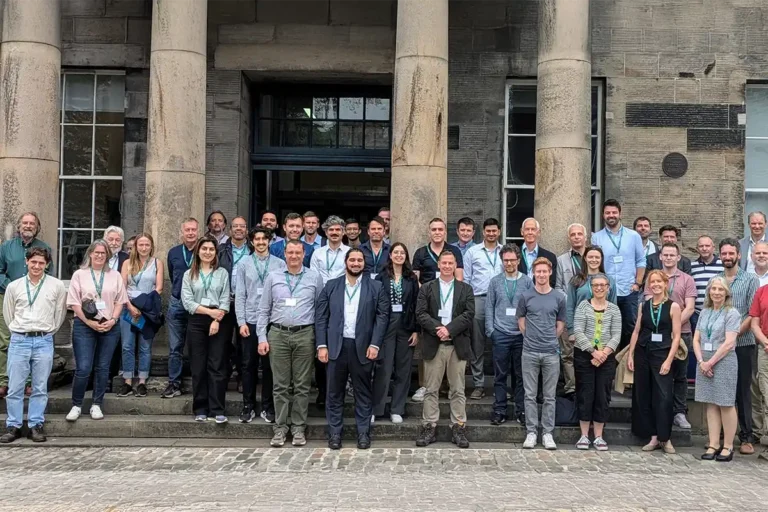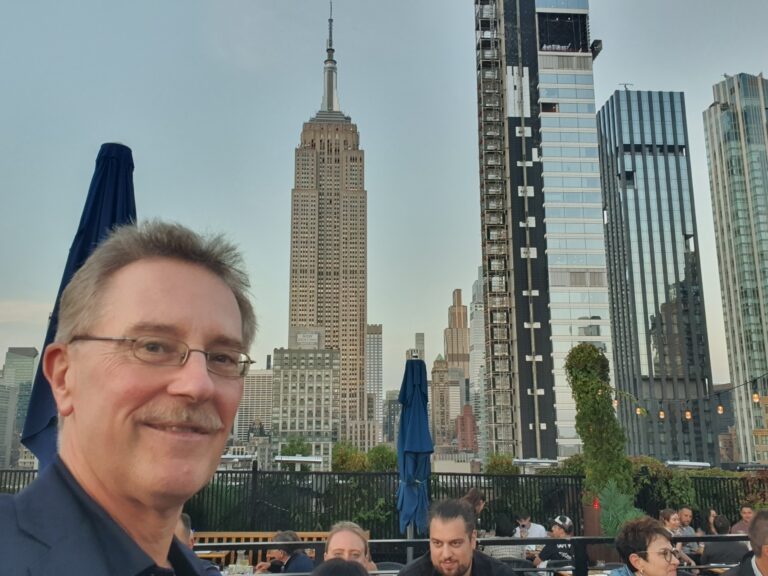
NETL 2022 Carbon Management Project Review Meeting, Pittsburgh – Open Plenary (Monday 15th August)
17 August 2022


The NETL 2022 Carbon Management Project Review Meeting kicked off its opening plenary session ‘Launching the CCUS Industry of the Future’ with an introduction from Dr Brian Anderson (Director, NETL). There was a general feeling of excitement. Not only was this a fully packed conference with a cap at 650 attendees, and the first in-person for three years, but also there pervaded a sense of optimism that ‘now is the moment’ where innovation moves to the market place. Much of this optimism comes from the announcement on Friday 12th August of the Biden Administration’s Inflation Reduction Act, representing a huge confidence boost for the industry. Dr Anderson emphasised that ‘we have aggressive goals and time is of the essence’, with 50% reduction in net greenhouse gas emissions being targeted by 2030 – just 8 years away. Scaling up will be needed across multiple sectors, with electricity only being a quarter of the pie. There was a strong theme which included: investing in supply chains; economic revitalisation; climate and environmental justice; and job creation in areas that had seen losses (e.g. former coal sector). These measures would impact peoples lives, not just domestically, but across the world.
Brad Crabtree (Assistant Secretary for the Office of Fossil Energy and Carbon Management, US DOE) was the first keynote speaker, and reiterated the celebratory moment ‘Monday morning after Friday afternoon’s celebration’. He emphasised how this was a result of many years of work behind the scenes and also recognised the challenges of the past few years with Covid and the Russian invasion of Ukraine. Brad placed the Inflation Reduction Act in context, that it was the most important climate act in the US, and the world, adding funding to areas that have previously lacked. The untold story of years of major bipartisan effort from many stakeholders, preceded by: 2018’s reformed expansion of 45Q tax credits; the 2020 Energy act which expanded the R&D scope for ‘chips and science’, and although this didn’t include extra funding it did facilitate projects; and in November 2021 an extra $61 billion promised with $12.1 billion for CCS. This represents the world’s largest investment of this type and extends beyond R&D. It also includes the establishment of a new office (the Office of Clean Energy Demonstration). Brad was quick to reiterate that this represented a ‘once in a lifetime opportunity at a time where the road travelled over the past 20 years hadn’t been easy’. He detailed many of the upcoming opportunities for expansion and establishing of a broader program of works including opportunities for leveraging more private capital and benefits of economies of scale. These included $2.6 billion for capture CC retrofits, $1 billion for large scale capture pilots, $3.5 billion for four DAC storage hubs, and $8 billion for four clean hydrogen hubs. Overall, this scale has never been attempted before. The increase of 45Q to $180/tonne for DAC and to $85/tonne would make CCS more attractive and within commercial reach (see previous IEAGHG blog for details). The US is setting a global precedent, intending to move technologies up the TRL scale to full commercialisation at a scale and scope not seen before.
Douglas Schultz (COO, Office of Clean Energy Demonstrations, US DOE) followed. The Office of Clean Energy Demonstrations is a brand new office and Douglas set out to explain what their function will be. He explained how there is a chasm between R&D and actual commercialisation, especially in carbon capture that will need serious investment, also imperative is a standardised approach and consistent funding for the commercialisation to succeed. The changes to 45Q tax credits will help monetize and create commercial opportunities. Project management would be a key factor, especially in how to build and operate, and maintain an effective oversight to those projects. The ability to communicate effectively to investors was critical. Douglas articulated his excitement about the journey, with funding available to large scale demonstration projects across the whole value chain from capture-transport and storage.
Dr Costa Samaras (Principal Assistant Director for Energy and Chief Advisor for Energy Policy in the White House Office of Science and Technology Policy’s first-ever Energy Division) gave a ‘White House Perspectives’ (in place of Sally Benson). He assured the room that there is an advocate for CCS at the highest level in the White House. Echoing many of the messages already given there was a sense of urgency that rapid and deep reductions were necessary to meet climate objectives and that CCS and CDR play a part in that. Environmental justice, jobs for energy communities and emissions reductions were key priorities for the Biden administration, and that the President was keen to do big things. The Bipartisan infrastructure law, Chips and Science Act and Inflation Reduction Act were all to be instrumental in the journey.
Guido DeHoratiis (General Engineer, Loan Programs Office, US DOE) brought a commercial perspective to the plenary session, representing the Loans Programs Office, the commercial bank of the DOE. Whose goal it is to bridge the ‘valley of death’ from concept to full market acceptance. How? Looking to move quickly, give access to capital, flexible financing, and committed DOE partnership. This includes: innovative clean energy; advanced transportation; and tribal energy. Guido outlined the transaction process overview from pre-application to award.
Last but by no means least was IEAGHG’s own Tim Dixon. He opened by first congratulating the US in leading the way, and recognised a significant milestone in the nation’s history by passing the Inflation Reduction Act, doing for CCUS as they did with getting men on the moon. Tim noted how the IEAGHG work was contributing to launching the CCUS industry of the future, including the new generation of CCUS professionals from our Summer Schools, and research on deployment topics. Tim outlined how IEAGHG has been involved in promoting, advancing and informing CCS at national and international levels. Particularly through the UNFCC and the COP events, by raising awareness and running side events. Tim detailed the significant milestones for CCS and brought the discussion up to date with the highlights from COP 26, including the finalising of the Paris Rulebook and Article 6. He talked through how nations had submitted their NDCs and were mostly focussed on easy to action changes, whereas longer term GHG strategies were more likely to include CCS. NDCs were to be resubmitted by the end of the year (not 5 years) with the opportunity for countries to go further and be more ambitious. Where further work on Article 6 was ongoing, Tim noted some of his concerns about the direction of conversation amongst the Supervisory Body– with a few members favouring nature based solutions over engineered carbon direct removal (CDR). Tim noted the contents of the recent IPCC AR6 reports and IEAGHGs contributions to those and promoted our IP on the review of WPIII report. He highlighted the global distribution of CCS projects as compiled by the Global CCS Institute and how vital it was to keep in mind the work yet to do in the countries without projects. Lastly, he promoted GHGT-16, noting that the USA had submitted more than double the number of abstracts than any other country, reflecting the quantity and quality of work on CCUS. Tim concluded with highlighting the broad scope of work produced by IEAGHG in the form of reports, technical reviews, IPs, knowledge transfer, networks and webinars, including on the theme of this plenary “Launching the CCUS industry of the future”.
A good start to four and a half days of technical presentations on capture, removals, utilisation, transport and storage.
Other articles you might be interested in
Get the latest CCS news and insights
Get essential news and updates from the CCS sector and the IEAGHG by email.
Can’t find what you are looking for?
Whatever you would like to know, our dedicated team of experts is here to help you. Just drop us an email and we will get back to you as soon as we can.
Contact Us NowOther articles you might be interested in
Get the latest CCS news and insights
Get essential news and updates from the CCS sector and the IEAGHG by email.
Can't find what you are looking for?
Whatever you would like to know, our dedicated team of experts is here to help you. Just drop us an email and we will get back to you as soon as we can.
Contact Us Now

